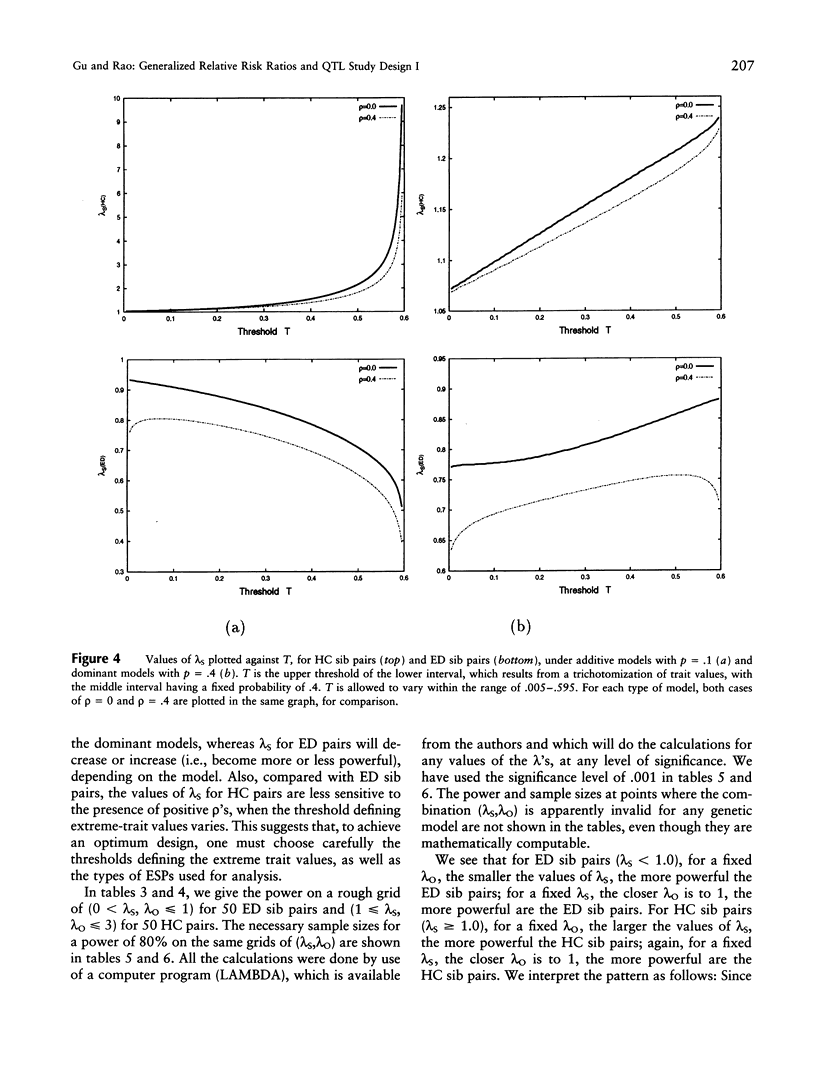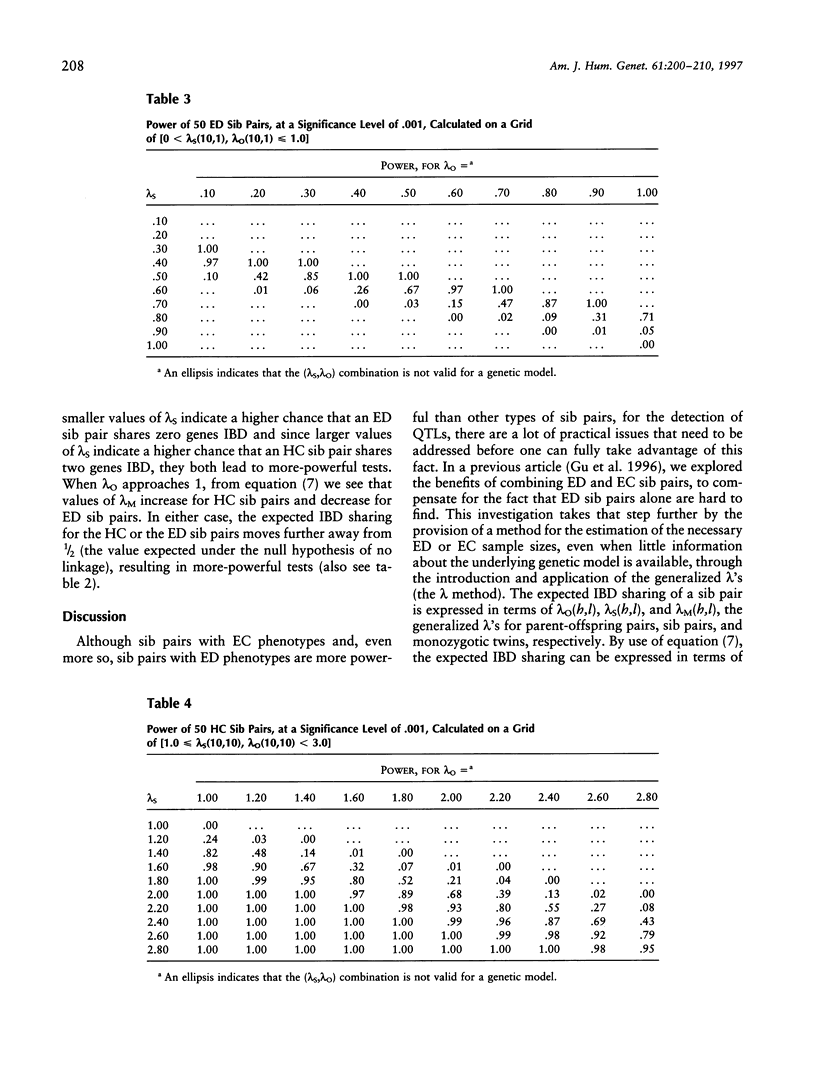Abstract
We generalize the concept of the relative risk ratio (lambda) to the case of quantitative traits, to take into account the various trait outcomes of a relative pair. Formulas are derived to express the expected proportions of genes shared identical by descent by a sib pair, in terms of the generalized lambda's for sib pairs (lambda S), parent-offspring pairs (lambda O), and monozygotic twins (lambda M) and in terms of the recombination fraction, with the assumption of no residual correlations. If residual correlations are nonzero among relative pairs, we assume that they are the same among sib pairs, parent-offspring pairs, and monozygotic twins, and we employ a slightly different definition for the generalized lambda so that the same set of formulas still hold. The power (or, the sample size necessary) to detect quantitative-trait loci (QTLs) by use of extreme sib pairs (ESPs) is shown to be a function of the three generalized lambda's. Since lambda M can be derived by use of values of lambda S and lambda O, estimates of the latter two lambda's will suffice for the analysis of power and the necessary sample sizes of ESPs, for a QTL linkage study.
Full text
PDF










Selected References
These references are in PubMed. This may not be the complete list of references from this article.
- Carey G., Williamson J. Linkage analysis of quantitative traits: increased power by using selected samples. Am J Hum Genet. 1991 Oct;49(4):786–796. [PMC free article] [PubMed] [Google Scholar]
- Eaves L., Meyer J. Locating human quantitative trait loci: guidelines for the selection of sibling pairs for genotyping. Behav Genet. 1994 Sep;24(5):443–455. doi: 10.1007/BF01076180. [DOI] [PubMed] [Google Scholar]
- Gu C., Rao D. C. A linkage strategy for detection of human quantitative-trait loci. II. Optimization of study designs based on extreme sib pairs and generalized relative risk ratios. Am J Hum Genet. 1997 Jul;61(1):211–222. doi: 10.1086/513909. [DOI] [PMC free article] [PubMed] [Google Scholar]
- Gu C., Todorov A., Rao D. C. Combining extremely concordant sibpairs with extremely discordant sibpairs provides a cost effective way to linkage analysis of quantitative trait loci. Genet Epidemiol. 1996;13(6):513–533. doi: 10.1002/(SICI)1098-2272(1996)13:6<513::AID-GEPI1>3.0.CO;2-1. [DOI] [PubMed] [Google Scholar]
- James J. W. Frequency in relatives for an all-or-none trait. Ann Hum Genet. 1971 Jul;35(1):47–49. doi: 10.1111/j.1469-1809.1956.tb01377.x. [DOI] [PubMed] [Google Scholar]
- Risch N. Linkage strategies for genetically complex traits. I. Multilocus models. Am J Hum Genet. 1990 Feb;46(2):222–228. [PMC free article] [PubMed] [Google Scholar]
- Risch N. Linkage strategies for genetically complex traits. II. The power of affected relative pairs. Am J Hum Genet. 1990 Feb;46(2):229–241. [PMC free article] [PubMed] [Google Scholar]
- Risch N., Zhang H. Extreme discordant sib pairs for mapping quantitative trait loci in humans. Science. 1995 Jun 16;268(5217):1584–1589. doi: 10.1126/science.7777857. [DOI] [PubMed] [Google Scholar]
- Suarez B. K., Rice J., Reich T. The generalized sib pair IBD distribution: its use in the detection of linkage. Ann Hum Genet. 1978 Jul;42(1):87–94. doi: 10.1111/j.1469-1809.1978.tb00933.x. [DOI] [PubMed] [Google Scholar]


